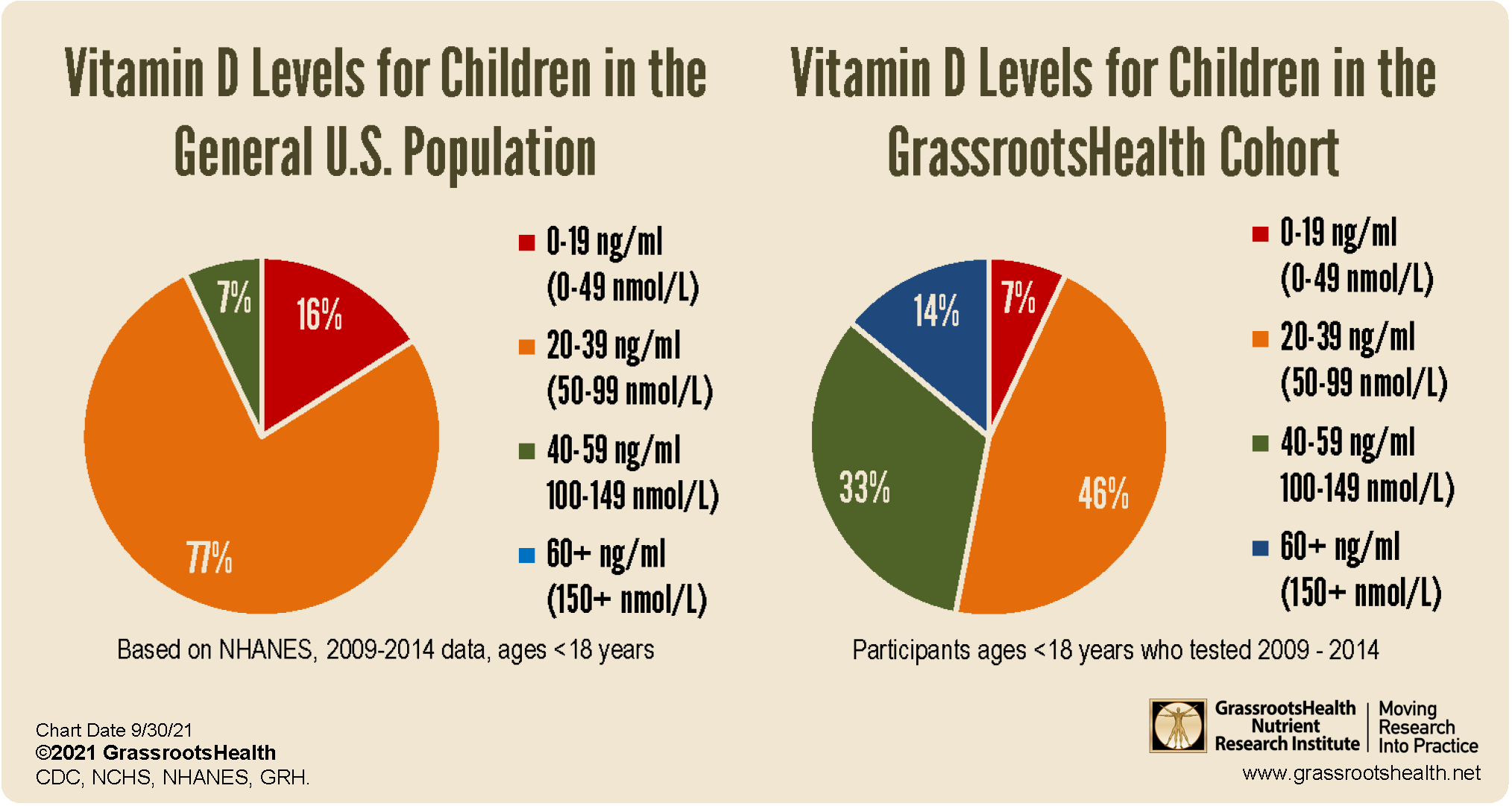Published on February 20, 2023
Cavities are expensive! Help spread the word that daily sunshine and vitamin D might be just as important to dental health in our children as regular brushing and flossing
Tooth enamel, which is the hard, outer surface of a tooth that protects against decay, primarily consists of calcium and phosphate. Vitamin D plays a key role in the absorption of calcium and phosphate, therefore, inadequate vitamin D can cause a lack of enamel, which can lead to cavities. Studies have linked vitamin D deficiency, in both the mother during pregnancy and the child after birth, to an increased risk of cavities. Today, we highlight two studies showing an association between vitamin D and childhood cavities.
Study #1: Cord Blood Vitamin D Levels and Childhood Cavities
A study published in March, 2019, in the Journal of Dental Research, assessed the association between maternal vitamin D levels during pregnancy and the rate of severe early childhood cavities in Alaska Native children. Cavity status was determined by a score based on the amount of decayed, missing, or filled primary teeth. In 43 children between one and three years of age, the research team found that children with cord blood vitamin D levels at or above 12 ng/ml (30 nmol/L) had half as much tooth decay as children with cord blood vitamin D levels below 12 ng/ml (P = 0.002).
Study #2: Child Vitamin D Levels and Childhood Cavities
In September 2018, a study assessing the relationship between vitamin D levels in children and early childhood cavities was published in the Journal of Dentistry for Children. This study examined 276 children aged one to six years old who received care at Seattle Children’s Hospital between 1999 and 2014. The research team found that children with vitamin D levels at or above 30 ng/ml (75 nmol/L) were half as likely to have cavities as children with vitamin D levels less than 30 ng/ml (P<0.001).
Too Many Children Are Vitamin D Deficient
Unfortunately, many children are not getting enough vitamin D, and the problem seems to worsen as they age.
According to 2009-2014 data from the National Health and Nutrition Examination Survey (NHANES) on children under the age of 18 in the United States, 93% had vitamin D levels below 40 ng/ml (100 nmol/L), with 16% of them below 20 ng/ml (50 nmol/L). That data is charted below next to data on children in the GrassrootsHealth cohort, among whom over 50% are still below the recommended 40 ng/ml, regardless of the fact that the parents testing their children through the project are educated enough about vitamin D to be measuring levels on their own.
Test Your Vitamin D Levels, and Those of Your Children
 Having and maintaining healthy vitamin D levels and other nutrient levels can help improve your health now and for your future. Choose which additional nutrients to measure, such as your omega-3s and essential minerals including magnesium and zinc, by creating your custom home test kit today. Take steps to improve the status of each of these measurements to benefit your overall health. With measurement you can then determine how much is needed and steps to achieve your goals. You can also track your own intakes, symptoms and results to see what works best for YOU.
Having and maintaining healthy vitamin D levels and other nutrient levels can help improve your health now and for your future. Choose which additional nutrients to measure, such as your omega-3s and essential minerals including magnesium and zinc, by creating your custom home test kit today. Take steps to improve the status of each of these measurements to benefit your overall health. With measurement you can then determine how much is needed and steps to achieve your goals. You can also track your own intakes, symptoms and results to see what works best for YOU.
Enroll in D*action and Test Your Levels Today!








